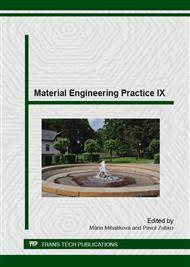[1]
L. Aye et al., Life cycle greenhouse gas emissions and energy analysis of prefabricated reusable building modules. Energ. Buildings. 47 (2012) 159–168.
DOI: 10.1016/j.enbuild.2011.11.049
Google Scholar
[2]
M.K. Dixit et al., Need for an embodied energy measurement protocol for buildings: A review paper. Renew. Sust. Energy. Rev. 16 (2012) 3730– 3743.
DOI: 10.1016/j.rser.2012.03.021
Google Scholar
[3]
G.K. Oral, Z. Yilmaz, The limit U values for building envelope related to building form in temperate and cold zones. Istanbul: Istanbul Technical University. (2002).
DOI: 10.1016/s0360-1323(01)00102-0
Google Scholar
[4]
J. Zhu, B. Chen, Simplified analysis methods for thermal responsive performance of passive solar house in cold area of China. Dalian, University of Technology. (2013).
DOI: 10.1016/j.enbuild.2013.07.038
Google Scholar
[5]
B. Bektas Ekici, A. Aytac Gulten, U.T. Aksoy, A study on the optimum insulation thickness of various types of external walls with respect to different materials, fuels and climate zones in Turkey. Elazig Department of Construction Education, Firat University. (2013).
DOI: 10.1016/j.apenergy.2011.10.008
Google Scholar
[6]
T. Catalina, V. Iordache, B. Caracaleanu, Multiple regression model for fast prediction of the heating energy demand. Technical University of Civil Engineering, Romania. (2013).
DOI: 10.1016/j.enbuild.2012.11.010
Google Scholar
[7]
B.P. Jelle, Traditional, state-of-the-art and future thermal building insulation materials and solutions-properties, requirements and possibilities. Norway, Trondheim. (2011).
DOI: 10.1016/j.enbuild.2011.05.015
Google Scholar
[8]
OI3-indicator: Leitfaden zur Berechnung von Ökokennzahlen für Gebäude. (2011).
Google Scholar
[9]
E. Krídlová Burdová, S. Vilčeková, A. Sedláková, L. Ťažký, Comparison of Material Compositions of Exterior Wall in term of Environmental and Energy Performance. Environmental Engineering 2014. Vilnius, Lithuania (2014) p.5.
Google Scholar


